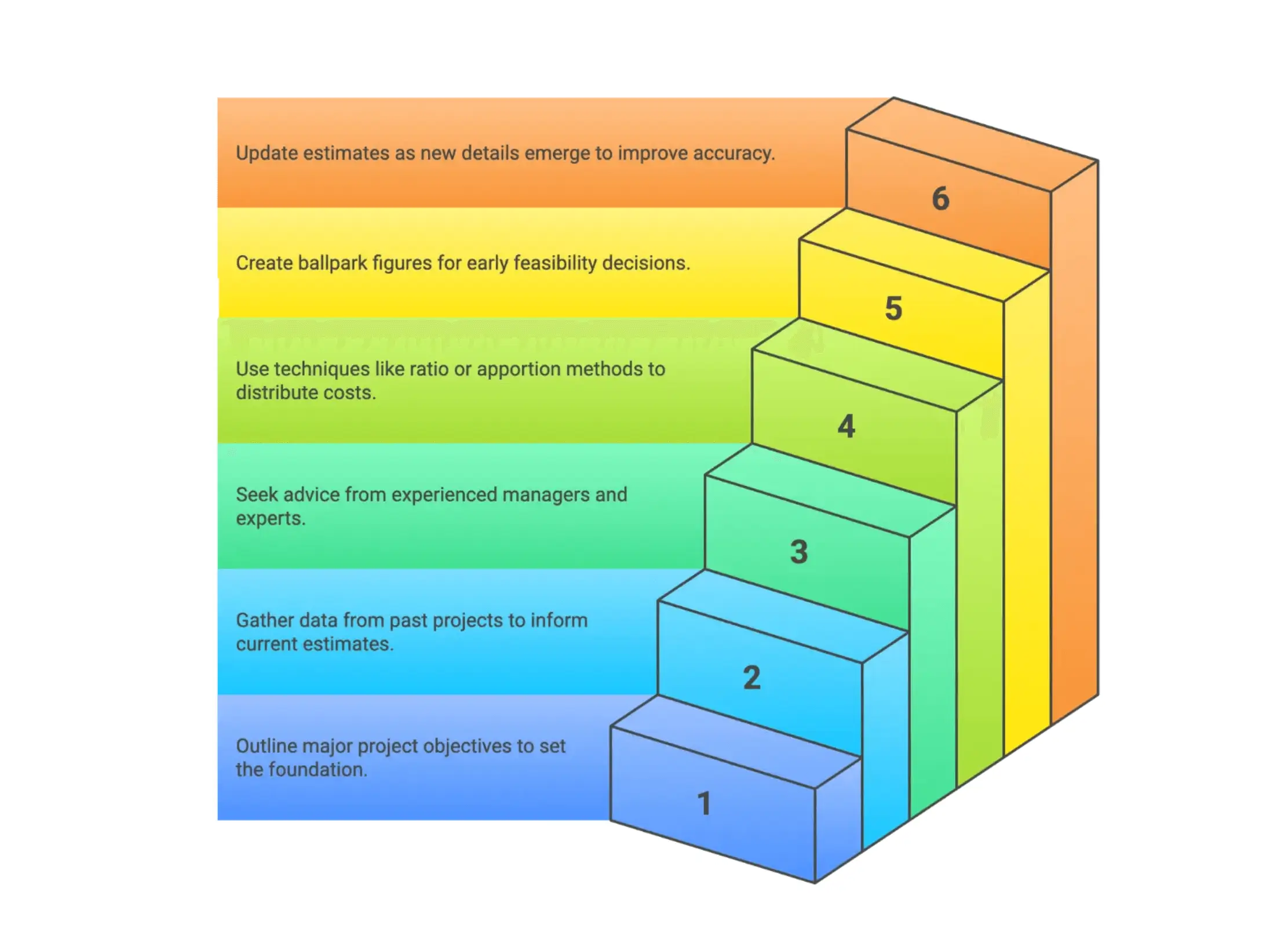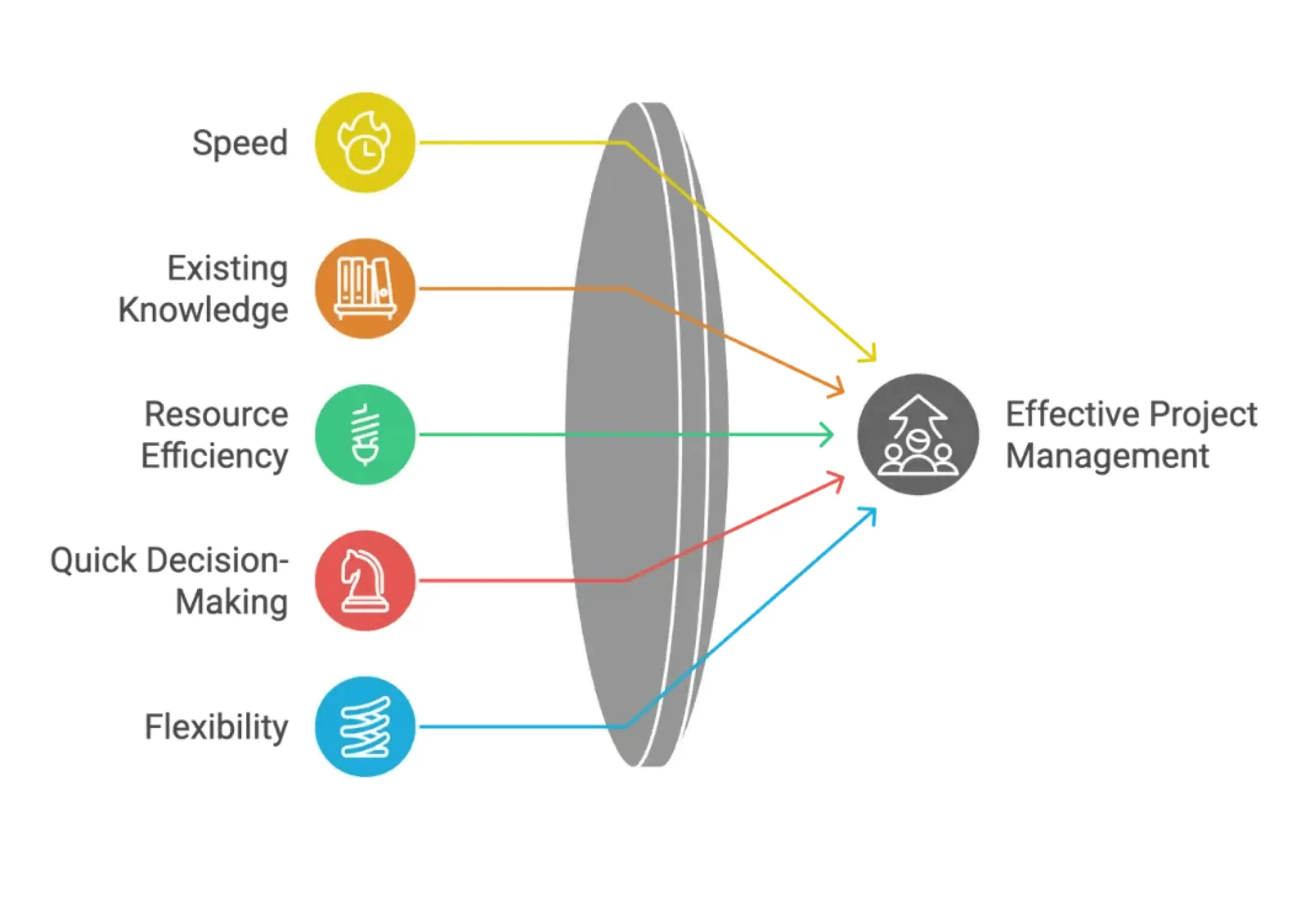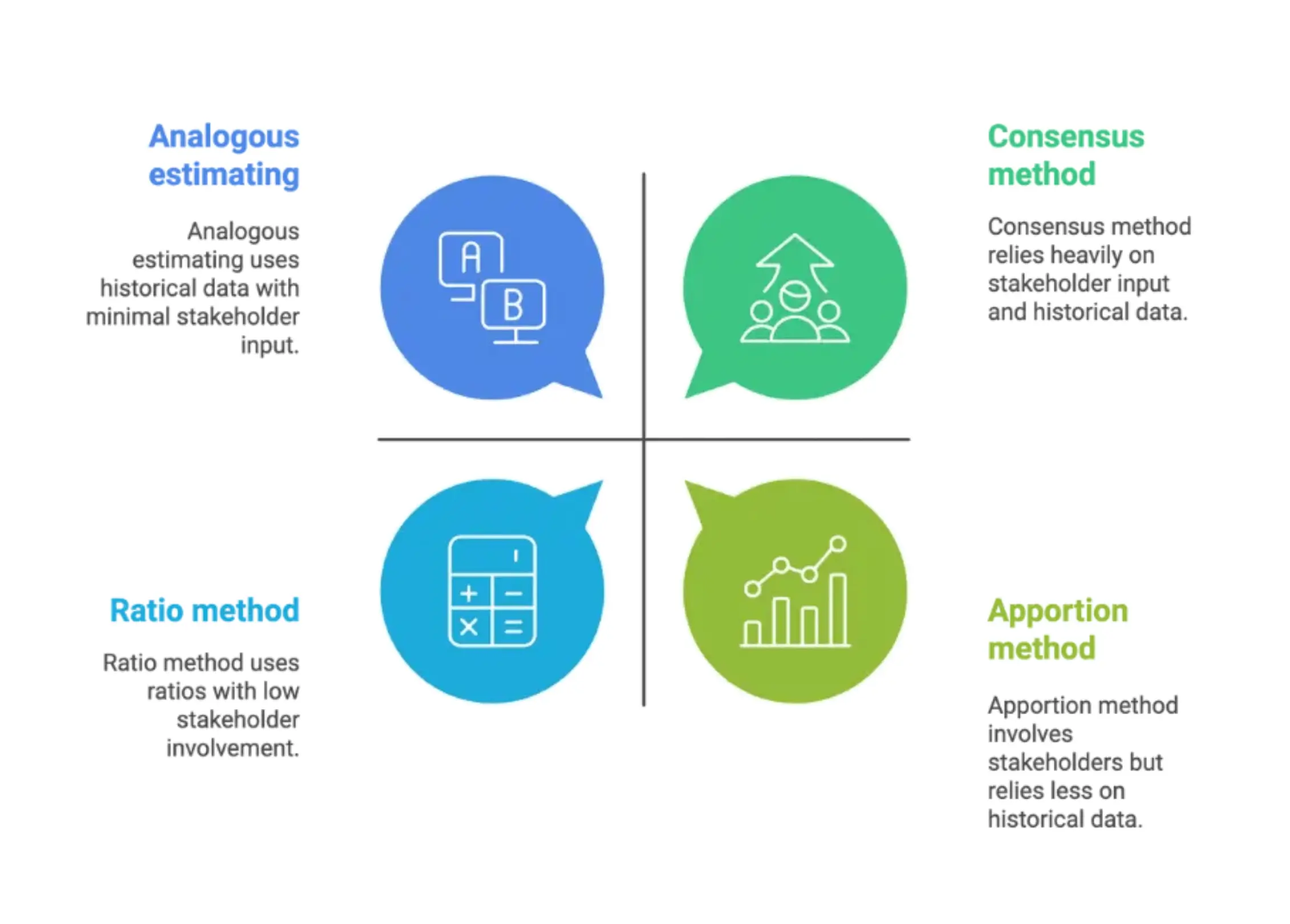

What Is Top-Down Estimating? A Complete Guide for Projects
TL;DR: Top-down estimating is a project management technique for generating a quick, rough project cost estimate at the very start, using knowledge from similar past projects and expert insight. It’s most useful when detailed information is scarce, helping project managers make fast, broad decisions on a project’s feasibility and direction.
What Is Top-Down Estimating in Project Management?
Top-down estimating is a method used in project management to derive initial project estimates based on high-level knowledge and historical data from past projects. Unlike detailed estimation methods, this approach focuses on using information from similar past projects and insights from experienced project managers to establish a ballpark cost estimate or early schedule. This occurs before all the details are known.
This estimating method is most often applied in the early stages of project planning, when requirements and project scope are still being defined. The top-down estimate provides a total project cost and sometimes a time and cost estimate, based on data and analogies from earlier, similar projects. This is especially practical for project managers who need to make initial decisions quickly, without diving deeply into every aspect of the proposed project.
The Top-Down Estimating Process
How Does the Top-Down Estimating Technique Work?
The top-down estimating process includes several steps:
- Define the project scope and broad goals: Project managers start by outlining the major objectives of the project's development.
- Collect data from similar past projects: Teams gather historical data from previous projects, focusing on overall costs, timelines, and major expenses.
- Consult with experienced managers and subject matter experts: Opinions from those who have delivered comparable work help refine the initial estimate.
- Apply analogous estimating methods or ratio methods: Techniques like the ratio method (e.g., cost per square foot for a construction project) or the apportion method are often used to distribute overall costs across project components.
- Develop and review the initial top down estimates: These ballpark figures serve as the baseline for early feasibility decisions.
- Adjust as new details emerge: As the project progresses and the team collects more holistic data, estimates can be updated to improve accuracy.

This estimating method prioritizes speed and efficiency, helping the entire company move forward even when detailed information is unavailable.
When Should Project Managers Use Top-Down Estimating?
Top-down estimating is best suited for early stages when details about the project components and specific costs are unclear. Project managers use this method during:
- Initial project planning for quick go/no-go decisions
- Feasibility studies of a proposed project
- Early budget or schedule setting by senior managers and company leaders
- Comparing new initiatives to similar past projects, especially when reliable historical data is on hand
- Technology projects or construction projects in conceptual design phases
Its efficiency helps align stakeholders and secure funding before more detailed analysis can be completed.
Advantages of Top-Down Estimating
Key Benefits for Project Management
- Speed: Delivers a rough estimate without requiring a detailed work breakdown, so initial numbers come together quickly.
- Leverages existing knowledge: Makes use of historical data and what project managers and the project team already know.
- Resource-friendly: Requires less time and effort compared to the bottom up approach, freeing up project resources for other planning process activities.
- Supports quick decision-making: Suitable for presenting project estimates to company managers or investors early on.
- Flexible: Top-down estimates are easily refined as more information becomes available.

Disadvantages and Limitations
Where Top-Down Estimating Falls Short
- Lower accuracy: Since the estimate relies on limited details, it may not reflect actual costs or project specifics, especially for unique or complex projects.
- Variability: Differences in expert opinion, outdated historical data, or lack of analogous projects can skew results, leading to significant budget variances.
- Potential for missing major expenses: Without detailed analysis, critical project components or material costs could be overlooked.
Top-down estimates work as an initial estimate but become less reliable as the project's feasibility is further developed. For precise budgeting and when project details are finalized, transitioning to detailed bottom up estimates is recommended.
Top-Down Estimating Methods
Analogous Estimating, Ratio Method & Consensus
Several specific estimating methods are used within the top-down approach for building an initial project budget:
- Analogous estimating: Uses data from similar projects to predict new project costs.
- Ratio method: Applies set ratios (like cost per unit) from previous projects to estimate specific aspects of the new project.
- Apportion method: Breaks the estimated cost across project components based on percentages derived from historical data.
- Consensus method: Gathers input from multiple stakeholders to reach agreement on a top down estimate, which can enhance accuracy and account for more perspectives.

Each method draws from existing knowledge but may be chosen based on the project type and the reliability of available data.
Comparison: Top-Down vs. Bottom-Up Estimates
- Top-down estimating provides a rough estimate quickly, which is ideal for initial planning.
- The bottom up approach is favored when accuracy is critical, and sufficient project details are available.
Many organizations combine these techniques. They start with top-down estimates to check feasibility, then apply detailed estimation methods like the bottom up approach later for final cost accuracy.
Applications: Where Top-Down Estimating Is Used
- Construction project: Companies estimate the total project cost of new buildings using analogous estimates from similar past projects, especially when project specifics are still in flux. For example, estimating the cost per square foot based on previous projects.
- Technology companies: Assess early feasibility for launching new products using top-down estimation methods and existing knowledge before developing a detailed plan.
- Early project planning in any industry: Project managers use top-down method to set initial budgets or schedules that inform whether a project idea is viable.

Key Metrics in the Top-Down Estimating Process
Beyond simply generating an estimated cost, the top-down estimating process can provide:
- Time and cost estimates for major project phases
- Outlines of project milestones and resource allocation
- Preliminary risk assessments and project estimates for high-level planning
- A baseline for comparing initial top down estimates with detailed estimates later in the process
Critical Factors for Accurate Top-Down Estimates
- Historical data quality: The accuracy of a top down estimate depends heavily on reliable historical data from similar past projects.
- Experience of project managers: Insights from professionals who worked on relevant previous projects improve estimate reliability.
- Involvement of the project team: Collaboration with team members who know specific cost drivers can help refine estimates and identify missing details.
- Use of statistical and benchmarking tools: These help generate more holistic data, increasing the credibility of the top-down estimate.

Best Practices for Effective Top-Down Estimating
- Capture lessons learned from previous projects in a structured project database.
- Use a standard format for recording costs and project details in every estimation process.
- Clarify all assumptions made in the initial estimate, documenting why certain figures from similar projects or ratio methods were used.
- Bring together input from different stakeholders for a more balanced outcome.
- Adjust the estimate as the project progresses and more detailed information becomes available.
Frequently Asked Questions
What is top-down estimating in project management?
Top-down estimating is when project managers use historical data, expert judgment, and overall project scope to develop a rough, high-level cost estimate at the early stages. The process produces a ballpark figure quickly, without requiring a detailed work breakdown.
When should I use a top-down estimate?
Top-down estimates are most useful during the concept and early feasibility stages, when information is limited and quick go/no-go decisions are needed. It is also valuable for early budget presentations to stakeholders or company leaders.
What are the main advantages and disadvantages of top-down estimating?
Advantages:
- Provides an initial estimate quickly, with little detail needed
- Useful for early-stage decision-making and resource allocation
- Leverages existing knowledge from previous projects
Disadvantages:
- Can be inaccurate if historical data is out-of-date or if the project is unique
- May overlook project specifics and detailed costs
How does the top-down approach compare to the bottom up approach?
The top-down approach works from the big picture first. It is best for early phases and projects with lots of historical data available. The bottom up approach compiles detailed costs from the ground up for more accurate, later-stage budgeting.
What is an analogous estimating method?
Analogous estimating uses data from existing or similar past projects as a basis for the new project's estimate, adjusting for any known differences between them.
What role do project managers play in top-down estimating?
Project managers use their knowledge of the project scope, available historical data, and expert judgment to generate and review initial top down estimates. Their experience helps identify potential gaps in the estimating process and improves the quality of early forecasts.
Conclusion
Top-down estimating is a vital project management tool, especially in the early stages of a project’s development when time is limited and details are unclear. By drawing on historical data and the experience of project managers, it offers a more holistic data-driven approach for quick and flexible decision-making. While not as precise as detailed estimation methods, the top-down estimating technique is key for initial budgeting, assessing feasibility, and setting a direction before transitioning to more detailed bottom up estimates as the project progresses.
Ready to advance your project estimating process? Explore Nomitech’s complete platform suite or connect with us to discuss the best solutions for your next project.




